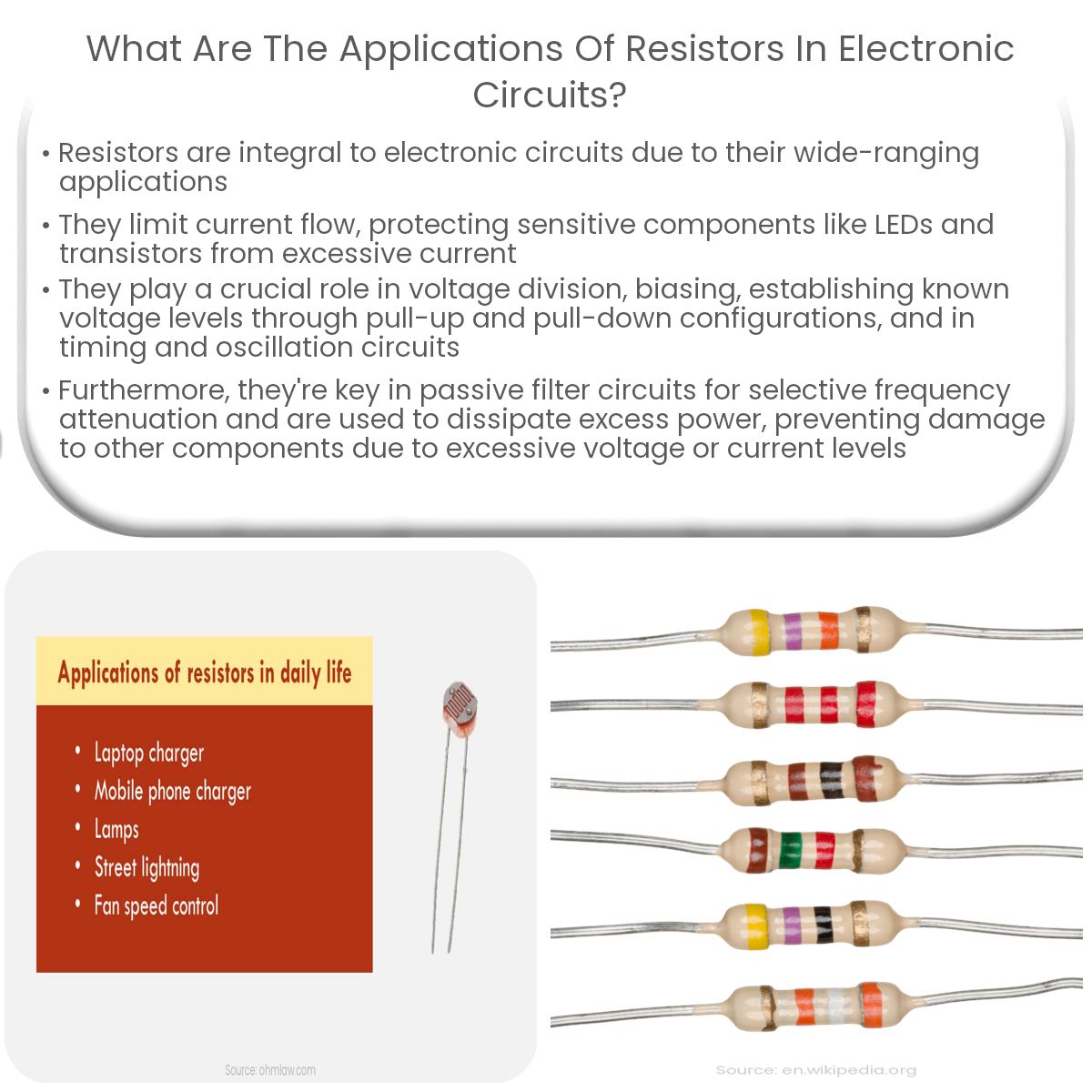Resistors are used in electronic circuits for current limiting, voltage division, biasing, pull-up/pull-down, timing, filtering, and power dissipation.
Applications of Resistors in Electronic Circuits
Resistors are fundamental components in electronic circuits, serving a wide range of purposes. They control the flow of current, protect sensitive components, and facilitate various types of signal processing. Below are some common applications of resistors in electronic circuits.
1. Current Limiting
Resistors are often used to limit the current flow in a circuit. This protects sensitive components, such as LEDs or transistors, from excessive current that could cause damage or reduce their lifespan. By placing a resistor in series with the component, the current flow can be controlled to stay within safe limits.
2. Voltage Division
In a voltage divider circuit, resistors are used to divide the input voltage into smaller portions based on their resistance values. This is useful for stepping down voltage levels or creating reference voltages for various applications, such as analog-to-digital converters and operational amplifiers.
3. Biasing
Resistors are used for biasing semiconductor devices like transistors and diodes. Biasing sets the operating point of a device, ensuring it works within its intended range. By connecting resistors in specific configurations, the desired biasing conditions can be achieved.
4. Pull-up and Pull-down Resistors
Resistors are used in pull-up and pull-down configurations to establish a known voltage level on an input or output line. This prevents floating inputs, which can cause unpredictable behavior in digital circuits. Pull-up resistors connect the line to a positive voltage, while pull-down resistors connect it to ground.
5. Timing and Oscillation
Resistors play a crucial role in timing and oscillation circuits, often used in combination with capacitors or inductors. By adjusting the resistor value, the time constant of an RC or RL circuit can be fine-tuned, resulting in precise control of timing or frequency generation.
6. Filtering
Resistors are essential components in passive filter circuits, such as low-pass, high-pass, and band-pass filters. By combining resistors with capacitors or inductors, these filters selectively attenuate specific frequency ranges, allowing desired signals to pass through while blocking unwanted noise.
7. Power Dissipation
In some applications, resistors are used to dissipate excess power. By converting electrical energy into heat, power resistors prevent damage to other components in the circuit due to excessive voltage or current levels.
In conclusion, resistors are versatile and vital components in electronic circuits, serving a wide array of functions. From current limiting to filtering, their applications are numerous and indispensable in modern electronics.


